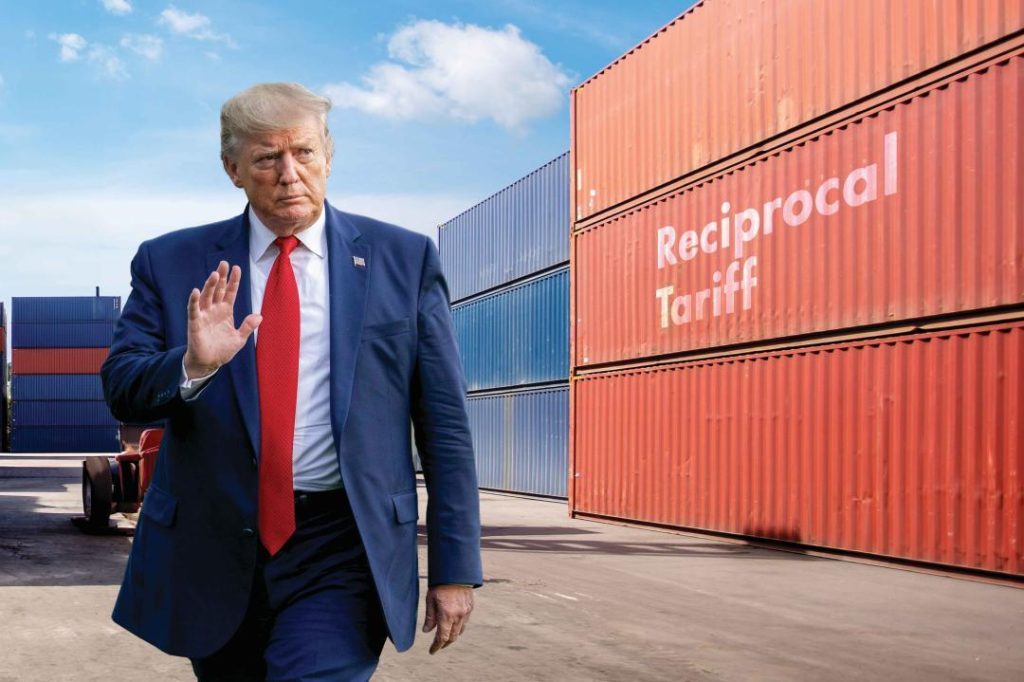
The Great Tariff War: Disruption, Diplomacy, & the Future of Trade
The world is witnessing a significant shift in global trade dynamics, marked by the ongoing trade tensions between the United States and China. The recent tariff announcements have sent shockwaves across the globe, affecting industries and economies worldwide. As the world grapples with the implications of these changes, it’s essential to examine the current scenario, the impact of tariffs on trade, and the opportunities emerging for countries like India.
Background of the Great Tariff War
The tariff war began in 2018 when the United States imposed tariffs on Chinese goods worth $34 billion, citing unfair trade practices and intellectual property theft. China retaliated with tariffs on $3 billion worth of US goods. Over the past two years, the trade tensions have escalated, with both countries imposing tariffs on each other’s goods.
The current tariff scenario
As of now, the US has imposed tariffs on approximately $360 billion worth of Chinese goods, including electronics, machinery, and textiles. China, in turn, has imposed tariffs on around $110 billion worth of US goods, including soybeans, aircraft, and automobiles.
The impact of tariffs on trade
The tariff war has resulted in significant disruptions to global supply chains. Companies are forced to re-evaluate their sourcing strategies, navigate complex customs procedures, and absorb the increased costs. The tariffs have also led to a surge in prices, affecting consumers and industries worldwide.
The Indian Opportunity
Amidst the ongoing trade tensions, India is emerging as an alternative to China for global businesses. The country’s strategic location, skilled workforce, and growing infrastructure make it an attractive destination for companies looking to diversify their supply chains.
According to industry experts, India is poised to become a significant player in the global manufacturing and logistics landscape. The country’s government has implemented policies aimed at promoting domestic manufacturing, and the “Make in India” initiative has seen significant investments in the past few years.
India’s advantage lies in its proximity to the US and Europe, making it an ideal location for companies seeking to reduce their reliance on Chinese supply chains. The country’s logistics sector is also growing rapidly, with investments in infrastructure development and digitalization.
The Future of Trade
As the trade landscape continues to evolve, it’s essential for businesses and governments to adapt to the changing dynamics. The tariff war has highlighted the need for diversification, flexibility, and strategic planning in global supply chains.
India’s emergence as an alternative to China presents a significant opportunity for the country to strengthen its position as a global manufacturing and logistics hub. The government’s policies and initiatives aimed at promoting domestic manufacturing and infrastructure development will play a crucial role in realizing this goal.
The future of trade will likely involve a mix of bilateral and multilateral agreements, aimed at promoting free and fair trade practices. The ongoing trade negotiations between the US and India, aimed at achieving a $500 billion trade goal by 2030, are a step in the right direction.
Conclusion
The Great Tariff War has disrupted global supply chains, led to increased costs, and affected industries worldwide. However, amidst the chaos, India is emerging as an alternative to China, offering opportunities for businesses and governments to adapt and thrive.
As the world navigates the complexities of global trade, it’s essential to focus on diplomacy, cooperation, and strategic planning. The future of trade will involve a balance between bilateral and multilateral agreements, aimed at promoting free and fair trade practices.
For India, the current scenario presents a significant opportunity to strengthen its position as a global manufacturing and logistics hub. With the right policies and investments, the country can capitalize on its advantages and emerge as a leading player in the global trade landscape.
Source:
https://www.logisticsoutlook.com/supply-chain/the-great-trump-tariff-war






